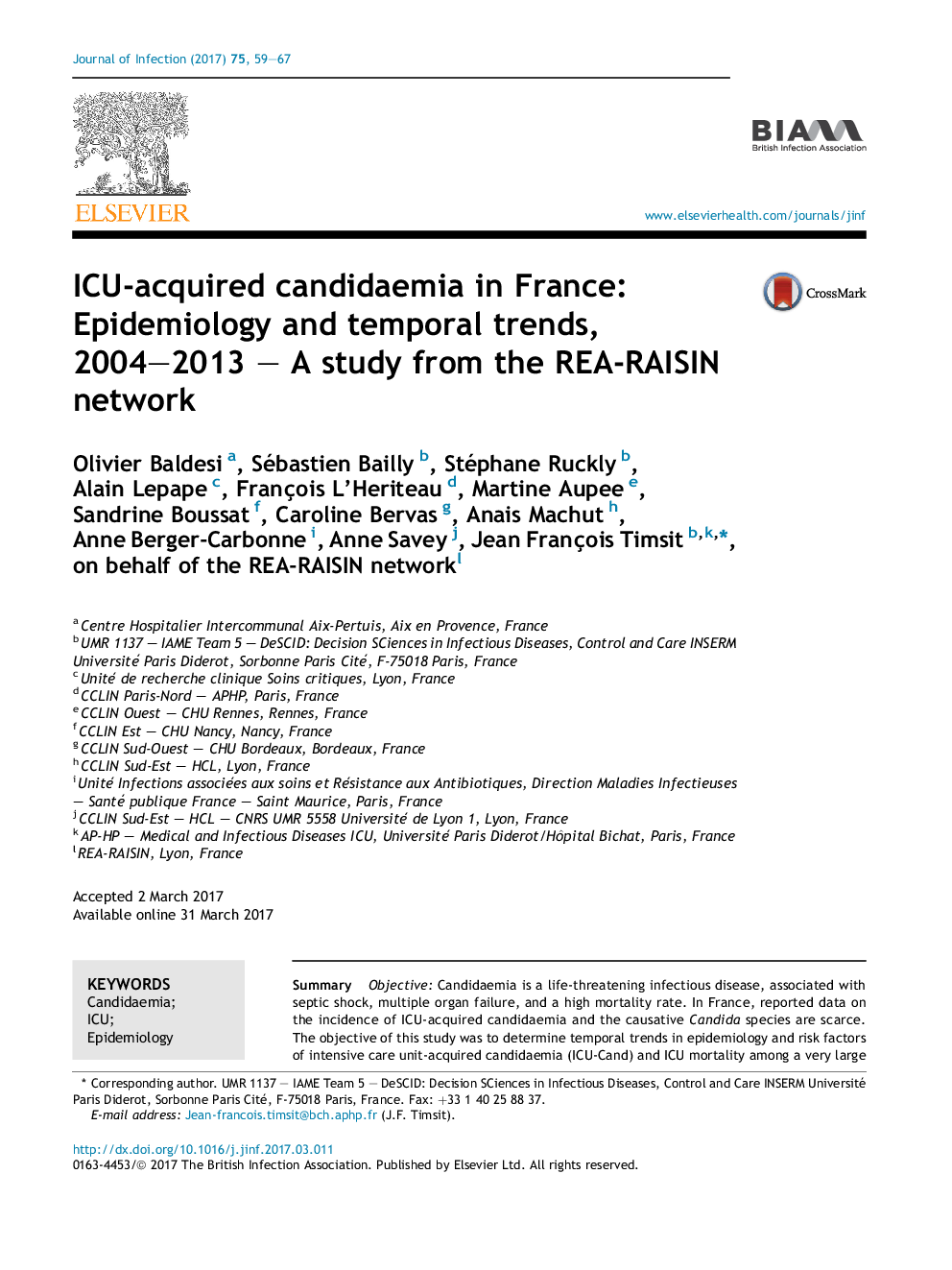| Article ID | Journal | Published Year | Pages | File Type |
|---|---|---|---|---|
| 5668685 | Journal of Infection | 2017 | 9 Pages |
SummaryObjectiveCandidaemia is a life-threatening infectious disease, associated with septic shock, multiple organ failure, and a high mortality rate. In France, reported data on the incidence of ICU-acquired candidaemia and the causative Candida species are scarce. The objective of this study was to determine temporal trends in epidemiology and risk factors of intensive care unit-acquired candidaemia (ICU-Cand) and ICU mortality among a very large population of ICU patients.MethodDemographics, patient risk factors, invasive device exposure and nosocomial infection in ICU patient were collected from 2004 to 2013 in a national network of 213 ICUs: REA-RAISIN. Incidence and risk factors for candidaemia and ICU mortality were assessed.ResultsOut of 246,459 ICU patients, 851 developed an ICU-cand, representing 0.3 per 1000 patients-days. The incidence rose sharply over time. Candida albicans was the main species. The overall and ICU mortality was 52.4% in ICU-cand patients. The main risk factors of ICU-cand were length of stay, severity of illness and antimicrobial therapy at ICU admission, immune status and use of invasive procedure. ICU-cand was an independent risk factor of mortality (OR: 1.53; 95%CI [1.40-1.70]); in a sub-group analysis, independent effects on mortality were observed with C. albicans (OR: 1.45 [1.23-1.71]), Candida tropicalis (OR: 2.11 [1.31-3.39]) and “other” Candida species (OR: 1.64 [1.09-2.45]).ConclusionICU candidaemia ranked sixth among bloodstream infections, and its average annual incidence was 0.3 per 1000 patients days. Despite of new therapy and international recommendation, the incidence rose sharply during the study period, and ICU mortality remained high.
